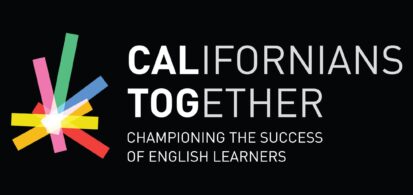Supporting all English learners (ELs) to achieve their highest potential has been a work in progress for California’s public school system. There is much to celebrate over the past decade. We have seen more and more high school graduates attain the State Seal of Biliteracy (57,561 recipients in 2021-22) with half of these recipients being current or former ELs. Our public schools also reclassify nearly two in three (65 percent in 2022-23) of ever-ELs (EL and RFEP students combined) by ninth grade.
The Need to Focus on Long-Term English Learners
Despite this progress, more work needs to be done to ensure success for all ELs. There are still many ELs who have remained in that status for six or more years with the system not being able to help them make progress towards English language proficiency. These students are long-term English learners (LTELs) and still make up nearly half of all ELs in the secondary grades (grades 6-12). This is why the continued focus on LTELs is so critical.
Progress from 2010 to 2020
Since the publication of Reparable Harm ringed the alarm bells in 2010, much progress has been made in California. From creating a state definition for LTELs in 2012 (AB 2193), to mandating reporting of their enrollment in LEAs in 2016 (SB 750), and more recently passing legislation in 2022 (AB 1868) to ensure that data on LTEL achievement and disability status is publicly reported, there has been consistent progress. This progress was highlighted in our 2021 publication, Renewing Our Promise, which further shined a light on the steady but slow progress that California had made in lowering the number and proportion of LTELs from 2014 to 2020.
Renewed Urgency Since the Pandemic
However, that progress has taken a hit since the pandemic. For example, in 2023-23, California enrolled 226,535 LTELs, making up 49 percent of secondary ELs. These numbers signify a significant increase in the number and proportion of LTELs since the 2019-20 school year when 204,042 LTELs were enrolled in California public schools, making up 46 percent of secondary ELs. This is a significant increase of over 22,000 LTELs.
The Opportunity: Changes Coming to the LCAP
With this urgency, there are significant changes that will be coming to the Local Control and Accountability Plan (LCAP) templates that can support LEAs in revisiting investments, strategies, and goals for meeting the needs of LTELs. These include changes mandated in the 2023 Budget Trailer Bill (SB 114) making LTELs a numerically significant student group to which LEAs must develop and describe specific actions to meet their needs. With the State Board of Education poised to adopt these and other updates to the LCAP at their November 2023 meeting, we hope that LEAs learn from best practices and continue to set goals for meeting the needs of LTELs.
Call to Action
There are examples of promising practices in Renewing Our Promise including a call to action to meet the goal that by the year 2030 California will reduce by half the percentage of ELs in grades 6-12 who are LTELs. This means ensuring that by 2030 less than one in four ELs in secondary gradea are LTELs. We look forward to seeing how LEAs write strategies to meet the needs of LTELs in their LCAPs and learning about the further expansion and implementation of promising practices so that we continue to build a system where no EL is left behind. Californians Together will continue to monitor these updates at the upcoming November SBE meeting and look forward to sharing additional information and guidance after the final template is adopted.
Resources:
- Renewing Our Promise: Research and Recommendations to Support California’s Long-Term English Learners (October 2021)
- Secondary School Courses Designed to Address the Language Needs and Academic Gaps of Long Term English Learners (2014)
- Reparable Harm: Fulfilling the Unkept Promise of Educational Opportunity for California’s Long Term English Learners (2010)
- Meeting the Unique Needs of Long Term English Language Learners: A Guide for Educators (March 2014) by the National Education Association.
Citations:
- California Department of Education. 2021-22 Participating Current and Former English Learners. Downloaded August 30, 2023 from https://www.cde.ca.gov/sp/el/er/sealofbiliteracy.asp
- California Department of Education, DataQuest. 2022-23 “At-Risk” and Long-Term English Learners (LTEL) by Grade. Downloaded August 30, 2023 from https://dq.cde.ca.gov/dataquest/longtermel/EverElType.aspx?cds=00&agglevel=State&year=2022-23
